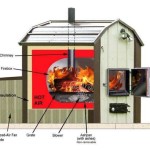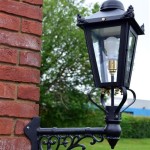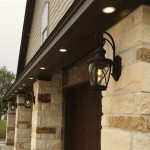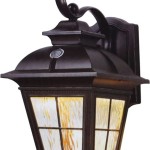How To Run Conduit For Outdoor Lighting
Outdoor lighting can dramatically enhance the curb appeal and safety of your home. Installing conduit for outdoor lighting is an essential part of any outdoor lighting project, providing a safe and durable pathway for electrical wiring. This article discusses how to run conduit for outdoor lighting, covering critical steps and considerations to ensure a successful installation.
Planning and Preparation
Before starting any outdoor lighting project, it’s imperative to plan carefully. This includes determining the desired lighting locations, the type of fixtures to be used, and the type of wiring needed. It is also essential to consult local building codes to ensure compliance with electrical safety regulations. Once the plan is in place, gathering the necessary materials is crucial. These materials typically include:
- Conduit (PVC or metal)
- Conduit fittings (elbows, connectors, boxes)
- Wire (appropriate gauge for the fixture's wattage)
- Grounding wire
- Staple gun and staples
- Wire strippers and cutters
- Voltage tester
- Level
- Measuring tape
- Safety glasses and gloves
In addition to these materials, it is essential to have the proper tools and equipment for digging trenches, cutting conduit, and installing the fittings. A shovel, a conduit cutter, and a drill with appropriate bits will come in handy.
Running the Conduit
Once the materials are gathered, it is time to run the conduit. The exact steps will vary based on the type of lighting fixture and the desired location. However, the general process involves:
- Determine the conduit route: Plan the path of the conduit, ensuring it follows the shortest distance and is safely away from any potential hazards like trees, walkways, or driveways. Consider the aesthetic impact as well, keeping the conduit hidden or discrete to avoid compromising the visual appeal of your landscaping.
- Dig the trench: Use a shovel to dig a trench deep enough to bury the conduit properly. The depth requirements will vary depending on local building codes. Ensure the trench is a consistent depth, minimizing potential tripping hazards.
- Install the conduit: Place the conduit in the trench, ensuring it sits level and does not have any sharp bends. If necessary, use conduit benders to create smooth bends in the conduit. Secure the conduit every four to six feet using conduit staples, firmly attaching it to the ground.
- Install fittings: At each location where the conduit changes direction or connects to a fixture, install the appropriate conduit fittings. These fittings are typically made of PVC or metal and ensure a secure and watertight connection. Use PVC cement to bond the fittings to the conduit, ensuring proper adhesion.
When running the conduit, it is crucial to ensure adequate clearance for the electrical wiring within the conduit. This will prevent damage to the wire and ensure a safe electrical connection.
Connecting Wires and Finalizing Installation
Once the conduit is installed, the next step is to connect the wiring. This process typically involves:
- Pull the wire: Pull the appropriate gauge wire through the conduit, ensuring it is long enough to reach the fixture and the electrical junction box. For long runs, it may be necessary to use a wire puller to facilitate the process.
- Connect the wires: At the fixture and the junction box, strip the insulation from the ends of the wires and connect them to the appropriate terminal points. Ensure proper polarity is adhered to (black to black, white to white), and that a grounding wire (green or bare copper) is connected as well.
- Secure the connections: Use wire nuts or other approved means to secure the connections, ensuring they are tight and properly insulated.
- Test the circuit: Before covering the trench, use a voltage tester to ensure the circuit is properly wired and functional.
- Backfill the trench: Once the wiring is complete and tested, carefully backfill the trench with the excavated soil. Compact the soil around the conduit to prevent settling and ensure proper support.
It is essential to follow all necessary safety precautions during the wiring process, always disconnecting power to the circuit before working on it and exercising caution around live wires.
Running conduit for outdoor lighting can be a challenging project, but the process is manageable with proper preparation and planning. By following these steps and adhering to safety guidelines, you can safely and efficiently install electrical wiring for outdoor lighting, enhancing the beauty and functionality of your outdoor space.

How To Run Electrical In Underground Conduit Outdoor Shed For Light Diy

Wiring Installation Coastal Source

How To Run Electrical Wiring Outside Family Handyman

How To Install A Yard Light Post Electrical Projects Home Wiring Lights

Running Power To An Outbuilding Fine Homebuilding

How To Install Outdoor Lighting And Solar Lights Garden

Your 4 Step Conduit Guide Jim Lawrence Blog

Your 4 Step Conduit Guide Jim Lawrence Blog

Outdoor Low Voltage Lighting Diy Family Handyman

Romex Wiring Outdoor Conduit Wesbell Electronics
Related Posts







